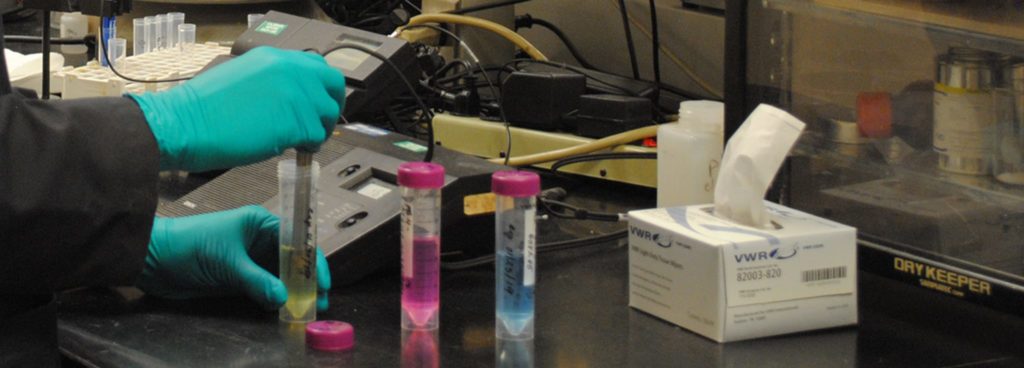- Home
- Services/IndustriesServicesindustries
- About Us
- LocationsStatesAccordion ContentAccordion ContentAccordion ContentAccordion Content
- Job Openings
- Quick Links
- ATS Family

What is Wet Chemical Analysis? Wet Chemistry is the process by which most of our modern day instrumental techniques are built upon.
Long before there were instruments to be able to measure the elemental concentration, pH, or moisture content of a sample, chemists utilized various wet chemical analysis techniques to measure these properties.
Some of the classical wet chemical methods used were precipitation, titration, and colorimetric methods. A common precipitation method used is in the determination of sulfate by precipitation with acidic barium chloride reacting with sulfate to form insoluble barium sulfate that is separated from the solution by filtration and weighed on a filter membrane.
Another common method used in elemental analysis is the determination of silver by precipitating with hydrochloric acid to form silver chloride. Titrimetric procedures have long been used to determine the concentration of a specific element. Knowing the concentration and volume of the titrant used in the analysis, one can calculate what the concentration of the specific element of interest once the endpoint is reached. Colorimetric analysis involves the addition of an indicator which changes color when added to a solution. The intensity of the color is directly proportional to the concentration of the substance in solution. That is, the darker the color the more of that species is present in the solution.
Common Elemental Analysis Include:
- Ion Selective Electrode
- pH
- Titration
- Ion Chromatography
- Parr Oxygen Bomb
- Colorimetric Analysis
ATS’s quality assurance program meets the most stringent industry requirements, including ISO 9001 certification and our Chemistry Laboratory is ISO 17025 (A2LA) accredited.

Request Form
"*" indicates required fields
